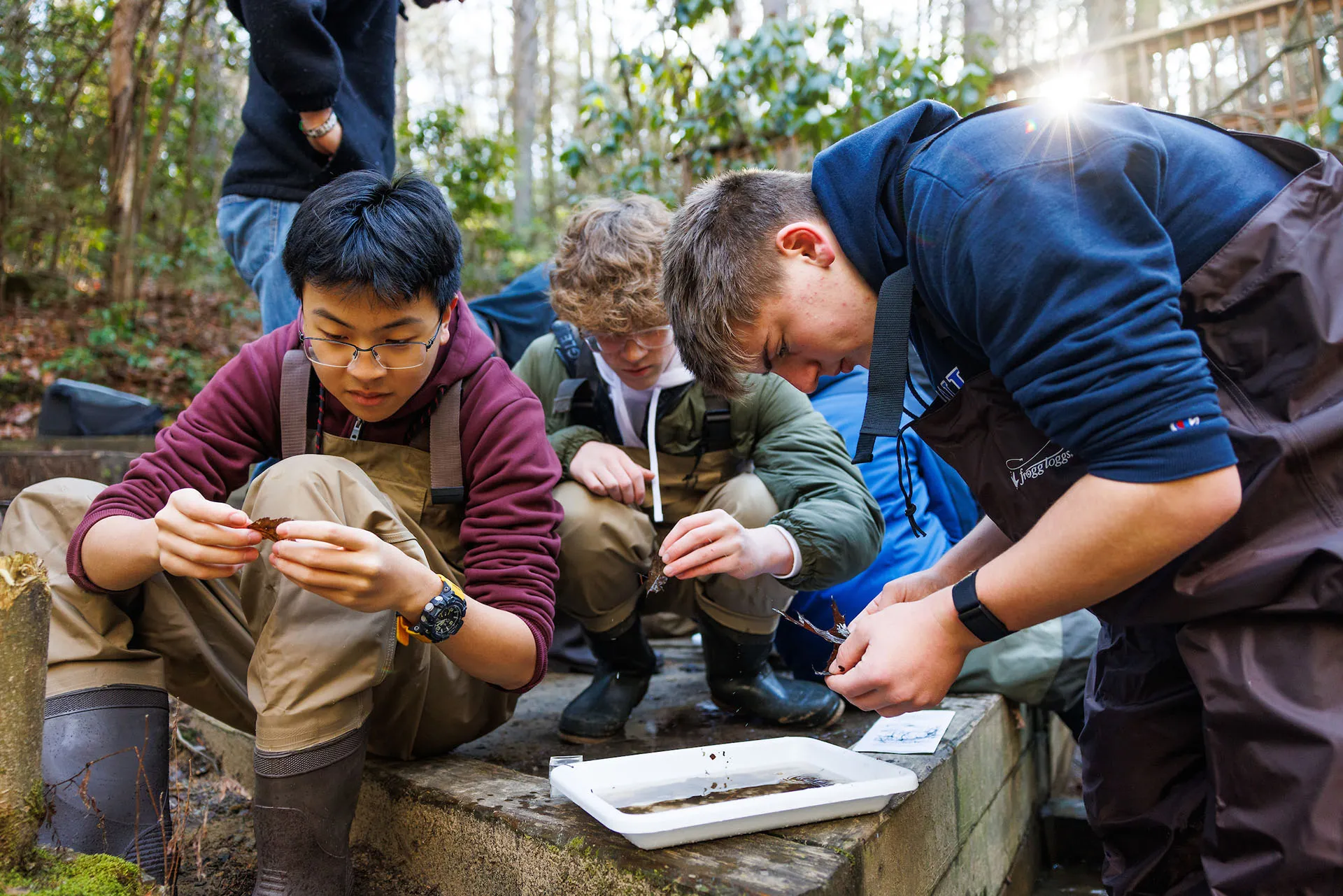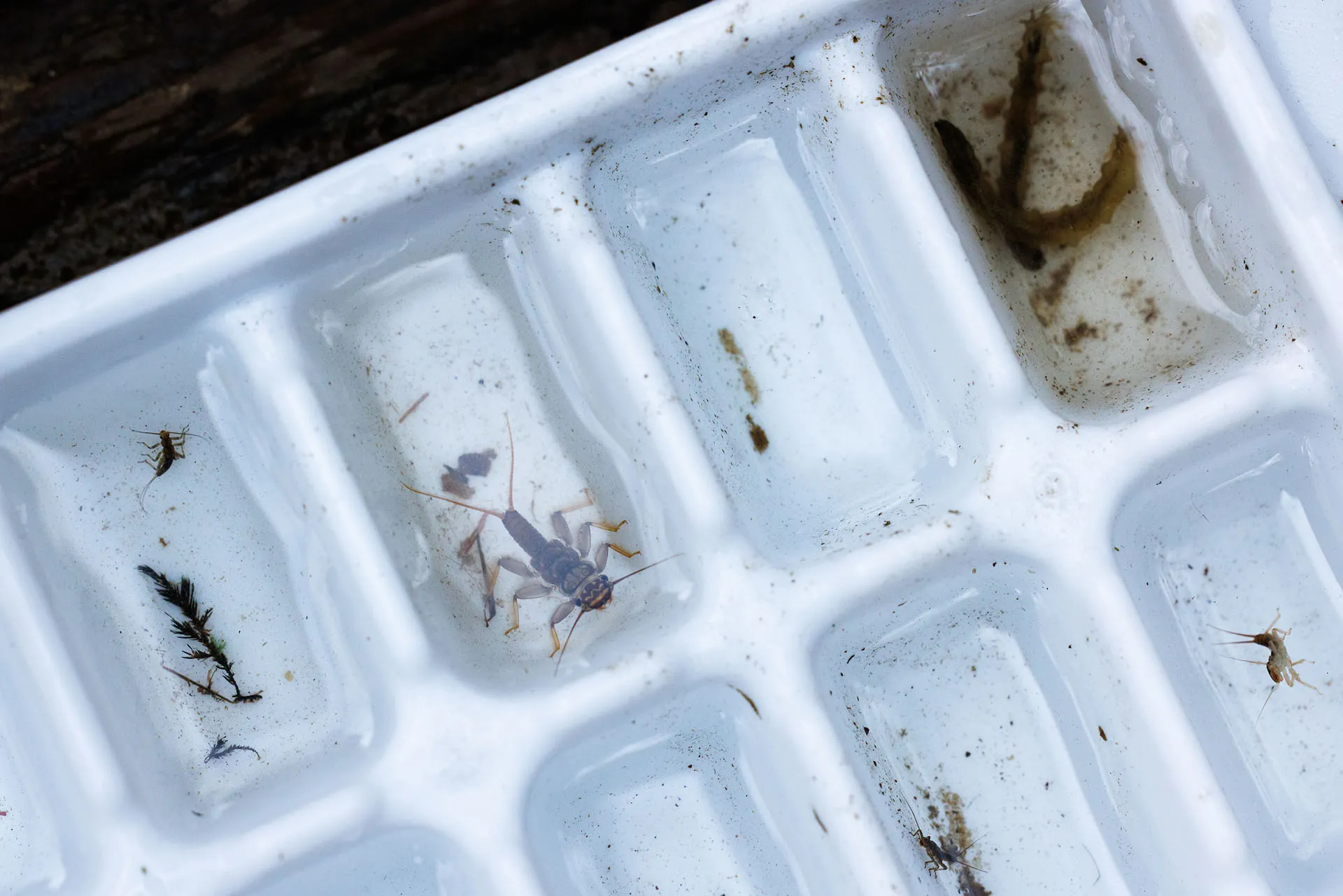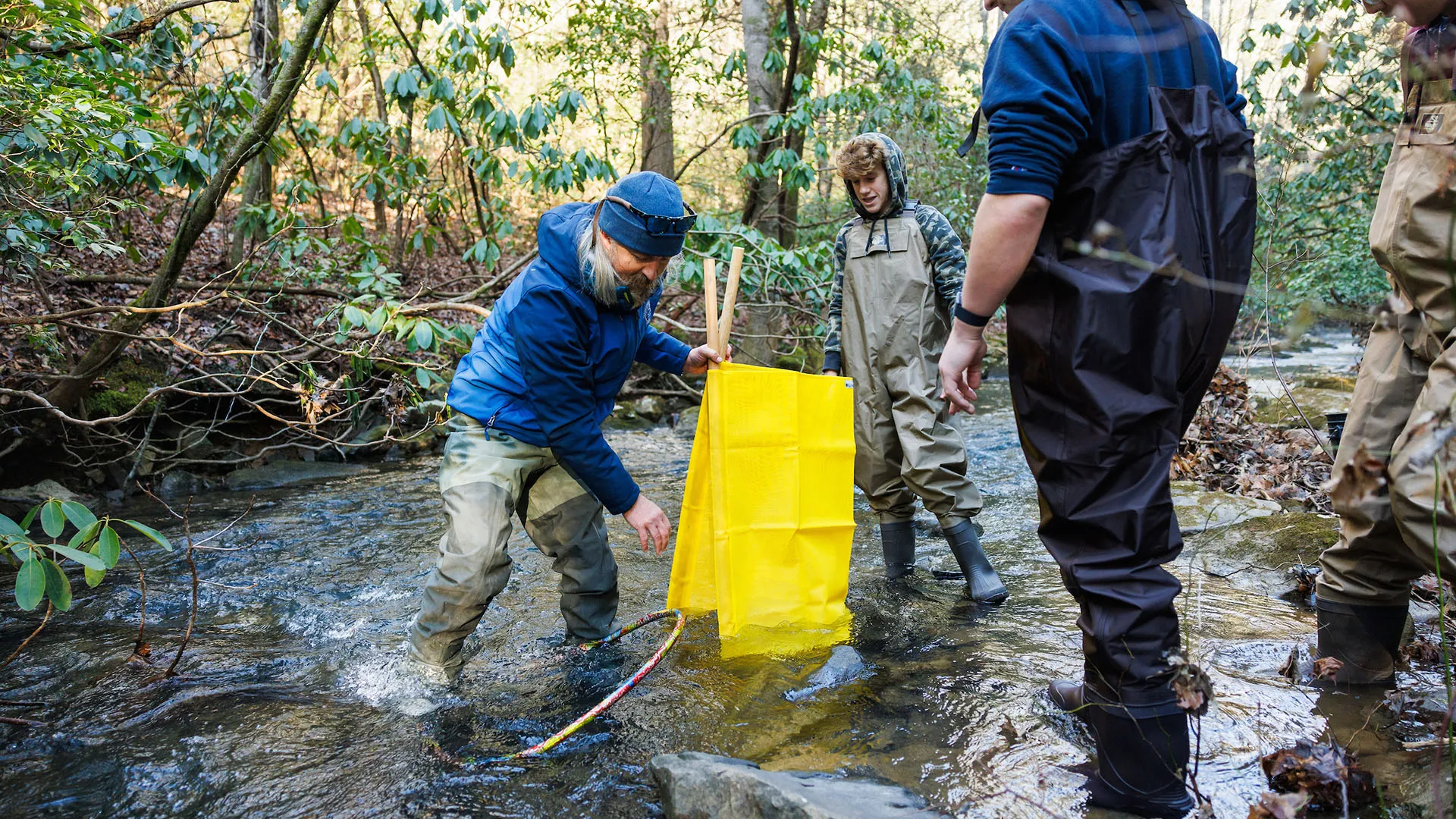McCallie School science teacher Andrew Rominger’s class was learning about macroinvertebrates.
Through classroom lectures, textbook study, sampling simulations and even YouTube videos, Rominger’s students had plenty of academic resources to guide their study of aquatic creatures like nymphal and larval insects, crayfish, and snails during a “Tornado Term” class, a two-week microterm focused on an elective subject (Rominger’s course focuses on Tennessee River ecology).
While that wealth of knowledge provides a great foundation for future learning, nothing energizes budding biologists like a chance to do hands-on field research.


With the help of freshwater scientists from the Tennessee Aquarium Conservation Institute earlier this week, Rominger’s students got to see firsthand how scientists working in the field sample for aquatic macroinvertebrates – and get their hands muddy – during a field outing to Lookout Mountain’s Long Branch Creek.
“Being out here in the water, touching the bugs, flipping the rocks over, working with real biologists from the Aquarium is pretty amazing and priceless, really,” Rominger says.
Donning waders to brave an icy stream before rifling through leaves and substrate in search of semi-aquatic creatures offers a degree of engagement and inspires awe in a way a typical academic setting just can’t match.
As they sift through trays material collected from the water, the students excitedly pluck each new find from the containers – with tweezers or bare hands – and set them aside for closer viewing. Damselfly nymphs, aquatic worms and even a juvenile Spring Salamander are among the group’s finds in this pristine aquatic environment.
Macroinvertebrates like insects are indicator species that offer clues about the health of a waterway. Located upstream from Lula Lake, the stream’s waterfall creates a natural barrier blocking fish that might prey on macroinvertebrates. That protection, along with fastflowing currents and ample overhead tree cover, ensure Long Branch Creek offers pristine habitat for these species.
“We found a lot of different bugs that require good water quality,” says Conservation Manager Adam Kennon. “They live in mountain streams, they like clean flowing water with lots of oxygen in it, and today this tells us Long Branch Creek is clean.”
The group surveyed another creek much closer to human development on the campus of Red Bank Elementary later in the day. There, Kennon expected to see vast differences in the types of invertebrates the students would find.
“You’ll see bugs that can tolerate poor water quality conditions, bugs that can survive in water that has less oxygen in it,” he explains. “That’s what we anticipate seeing at other sites versus here, where you have lots of oxygen, good water quality and a pretty much intact canopy.”



Noticing those differences is key to fostering a new generation of environmental stewards with an awareness of human impact on the natural world.
Cooperative projects like this one also represent longtime partnerships between the Aquarium and area educational institutions like McCallie, exposing students to natural sciences and conservation careers they might otherwise never consider.
By bridging concepts learned in the classroom with real-world applications and working freshwater scientists, the Aquarium is also fostering students’ lifelong relationships with nature.
“It’s really important for me to share my knowledge of streams and ecology,” Kennon says. “To see the kids light up when they find a salamander or a crayfish, that really just reinforces my love for aquatics and aquatic ecology, in general. Seeing them get really excited is just the best thing ever.”
